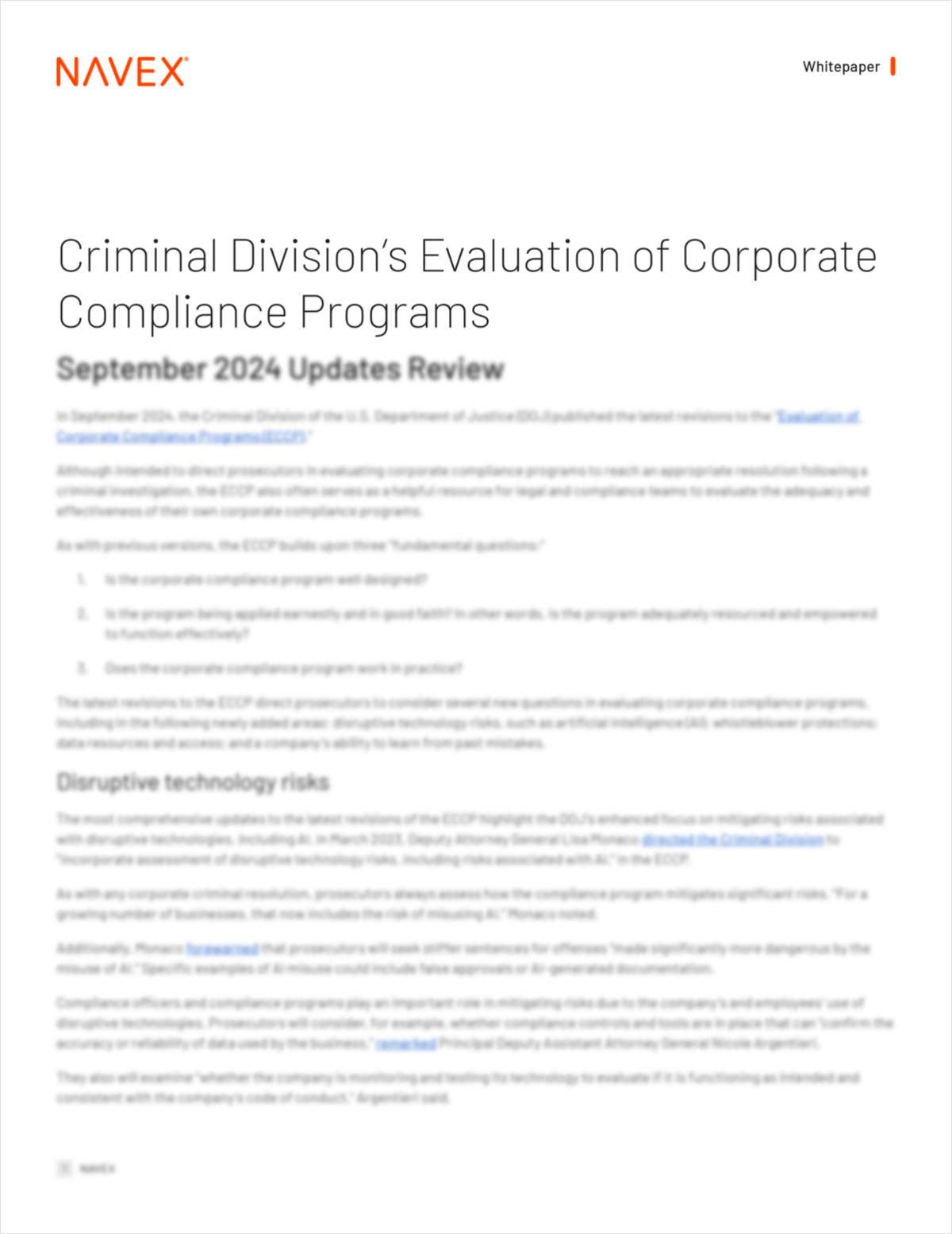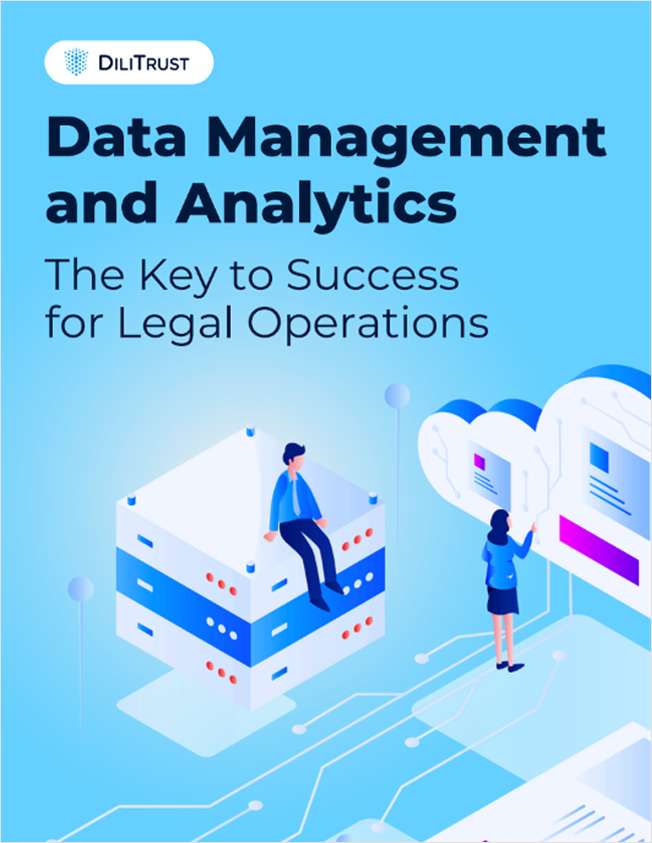Cybersecurity for Remote Workers: Keeping Financial Information Secure
At the beginning of the COVID-19 pandemic, businesses scrambled to rapidly deploy a remote workforce which created new challenges for businesses to continue operating and providing critical services. It also created an opportunity for malicious actors to hack into and gain access to IT systems and sensitive, personal information.
August 28, 2020 at 12:36 PM
7 minute read
This article appeared in Cybersecurity Law & Strategy, an ALM publication for privacy and security professionals, Chief Information Security Officers, Chief Information Officers, Chief Technology Officers, Corporate Counsel, Internet and Tech Practitioners, In-House Counsel. Visit the website to learn more.
At the beginning of the COVID-19 pandemic, businesses scrambled to rapidly deploy a remote workforce which created new challenges for businesses and financial institutions to continue operating and providing critical services. It also created an opportunity for malicious actors to hack into and gain access to IT systems and sensitive, personal information.
New research from VMware reveals a significant increase in cyberattacks experienced by financial institutions and banks between February and April of this year. VMware data indicates that close to a third of all cyberattacks target either banks or the healthcare sector. While some states are rescinding their stay at home orders, some companies are still erring on the side of caution by continuing to work remotely or have made the decision to work remotely indefinitely such as Twitter. As a result of the uncertain future of COVID-19, a lot of businesses will continue to work remotely and those that collect and manage financial information, including processing of payment card information, will need to assess any cybersecurity vulnerabilities, implement safeguards to protect financial information and educate and train its workforce. In response to COVID-19, many U.S. federal and state governmental agencies have issued helpful guidance for businesses to help prevent and mitigate cybersecurity incidents.
This content has been archived. It is available through our partners, LexisNexis® and Bloomberg Law.
To view this content, please continue to their sites.
Not a Lexis Subscriber?
Subscribe Now
Not a Bloomberg Law Subscriber?
Subscribe Now
NOT FOR REPRINT
© 2024 ALM Global, LLC, All Rights Reserved. Request academic re-use from www.copyright.com. All other uses, submit a request to [email protected]. For more information visit Asset & Logo Licensing.
You Might Like
View All
'Innovation Over Regulation': Tech Litigators and Experts Share Insights on the Future of AI, Data Privacy and Cybersecurity Under Trump

AT&T General Counsel Joins ADM Board as Company Reels From Accounting Scandal


How Dana Rao Built a 'Yes' Culture at Adobe and Why He Walked Away
Law Firms Mentioned
Trending Stories
- 1Walmart Accused of Misrepresenting 'Cheese' Ingredients in Great Value's Macaroni & Cheese
- 2Manhattan Lawyers' Group Prepares to Challenge Trump’s Plan for Mass Deportations
- 3Deal Watch: Simpson, Freshfields, Wachtell Lead Big Deals as SPACs, IPOs Crank Up
- 4In Mafia Case, Justices Ponder: Is Murder Always Violent?
- 5In RE: Hair Relaxer Marketing, Sales Practices and Products Liability Litigation
Who Got The Work
Michael G. Bongiorno, Andrew Scott Dulberg and Elizabeth E. Driscoll from Wilmer Cutler Pickering Hale and Dorr have stepped in to represent Symbotic Inc., an A.I.-enabled technology platform that focuses on increasing supply chain efficiency, and other defendants in a pending shareholder derivative lawsuit. The case, filed Oct. 2 in Massachusetts District Court by the Brown Law Firm on behalf of Stephen Austen, accuses certain officers and directors of misleading investors in regard to Symbotic's potential for margin growth by failing to disclose that the company was not equipped to timely deploy its systems or manage expenses through project delays. The case, assigned to U.S. District Judge Nathaniel M. Gorton, is 1:24-cv-12522, Austen v. Cohen et al.
Who Got The Work
Edmund Polubinski and Marie Killmond of Davis Polk & Wardwell have entered appearances for data platform software development company MongoDB and other defendants in a pending shareholder derivative lawsuit. The action, filed Oct. 7 in New York Southern District Court by the Brown Law Firm, accuses the company's directors and/or officers of falsely expressing confidence in the company’s restructuring of its sales incentive plan and downplaying the severity of decreases in its upfront commitments. The case is 1:24-cv-07594, Roy v. Ittycheria et al.
Who Got The Work
Amy O. Bruchs and Kurt F. Ellison of Michael Best & Friedrich have entered appearances for Epic Systems Corp. in a pending employment discrimination lawsuit. The suit was filed Sept. 7 in Wisconsin Western District Court by Levine Eisberner LLC and Siri & Glimstad on behalf of a project manager who claims that he was wrongfully terminated after applying for a religious exemption to the defendant's COVID-19 vaccine mandate. The case, assigned to U.S. Magistrate Judge Anita Marie Boor, is 3:24-cv-00630, Secker, Nathan v. Epic Systems Corporation.
Who Got The Work
David X. Sullivan, Thomas J. Finn and Gregory A. Hall from McCarter & English have entered appearances for Sunrun Installation Services in a pending civil rights lawsuit. The complaint was filed Sept. 4 in Connecticut District Court by attorney Robert M. Berke on behalf of former employee George Edward Steins, who was arrested and charged with employing an unregistered home improvement salesperson. The complaint alleges that had Sunrun informed the Connecticut Department of Consumer Protection that the plaintiff's employment had ended in 2017 and that he no longer held Sunrun's home improvement contractor license, he would not have been hit with charges, which were dismissed in May 2024. The case, assigned to U.S. District Judge Jeffrey A. Meyer, is 3:24-cv-01423, Steins v. Sunrun, Inc. et al.
Who Got The Work
Greenberg Traurig shareholder Joshua L. Raskin has entered an appearance for boohoo.com UK Ltd. in a pending patent infringement lawsuit. The suit, filed Sept. 3 in Texas Eastern District Court by Rozier Hardt McDonough on behalf of Alto Dynamics, asserts five patents related to an online shopping platform. The case, assigned to U.S. District Judge Rodney Gilstrap, is 2:24-cv-00719, Alto Dynamics, LLC v. boohoo.com UK Limited.
Featured Firms
Law Offices of Gary Martin Hays & Associates, P.C.
(470) 294-1674
Law Offices of Mark E. Salomone
(857) 444-6468
Smith & Hassler
(713) 739-1250








